What is an UML diagram for Java? Unified Modeling Languages are UML. This is a type of language with the help of which one can make Graphical representations or Pictorial representations of Software Systems.
We will Specify, Visualize, Construct, and Document the Software System’s artifacts with the help of this language.
Everyone in the Software and Non-Software industries can easily understand this language, an Industry-Standard language.
See Also: How To Do Javascript Performance Profiling In Chrome?
Table of Contents
UML – Advantages

- As it uses Graphical notation for representation purposes, it is easily understandable by everyone.
- Removes the complicated process of software design.
- Independent language.
- OOPs, and concepts can implement.
UML – TYPES
There are 13 UML diagrams, but they form two types. Here are uml diagram for java:-

Structural UML Diagrams
- Package Diagram
- Class Diagram
- Composite structure Diagram
- Object Diagram
- Deployment Diagram
- Component Diagram
Behavioral UML Diagrams
- Sequence Diagram
- Interaction overview diagram
- Activity Diagram
- Communication Diagram
- State Diagram
- Use Case Diagram
UML Diagrams can represent OOPs Concepts, which says that this language is helpful for Java developers as java is an Object Oriented language.
Java is an object-oriented programming language widely used to develop software, web, mobile, and desktop applications. UML diagrams are used in Java development to model and document the software system’s structure and behavior.
See Also: How To Fix Python NameError If Not Defined?
Types of Structural UML Diagrams
Now, there are different types of uml diagrams for Java. You can read more about them here:
CLASS DIAGRAMS
A class diagram in UML is a type of static diagram that describes the structure by showing its:
- Classes
- operations
- relationships among objects.
- attributes
PACKAGE DIAGRAM
- These are Structural Diagrams that are used for the simplification of complex class diagrams. And classes are organized into packages by these diagrams. A collection in which related UML elements like diagrams, courses, documents, and event packages are included is called a Package. Package diagrams provide clear visibility of large projects and software systems.

- A package diagram will help simplify the complicated class diagrams and arrange the classes as packages.
OBJECT DIAGRAMS
- Object diagrams represent the instances of classes in the software system. These object diagrams will show the objects and their relationships in a software system at a specific time.
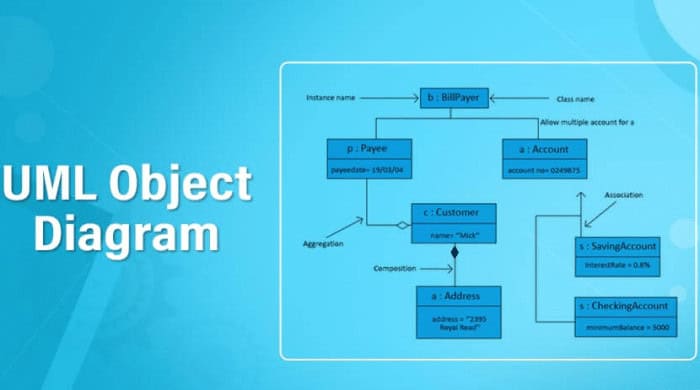
- Class diagrams and Object diagrams look alike. But, the significant difference is that class diagrams will provide an overall or abstract view of the system.
DEPLOYMENT DIAGRAM
- The deployment diagram will show the architecture of the execution of a system, which includes the nodes like hardware execution environments or software execution environments, and the middleware connecting them.
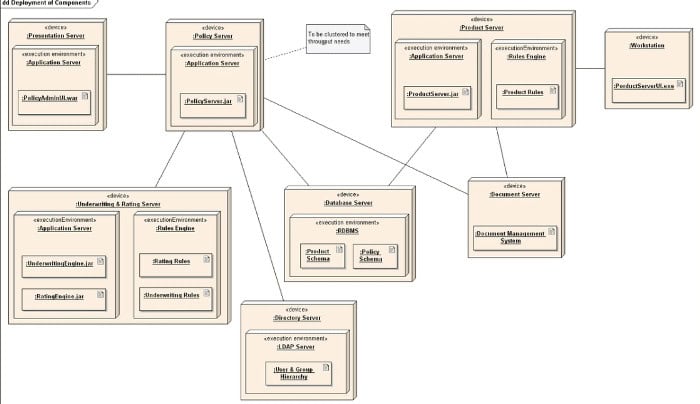
- These diagrams are for visualizing a system’s physical hardware and software. With this, one can easily understand how the system is physically deployed on the hardware.
COMPONENT DIAGRAM
- These diagrams make an extensive set of object-oriented systems into smaller components, which is why it is a component diagram.

- The relationships are visualized and also the organization that is present in the system. Executable systems can form with the help of these diagrams. A component is replaceable, and it is also executable, and it is a single unit of design.
Types of Behavioral UML Diagrams
Here are a few types of Behavioral UML Diagrams:
ACTIVITY DIAGRAM
These diagrams represent the workflow of a process or a use case in the software system. 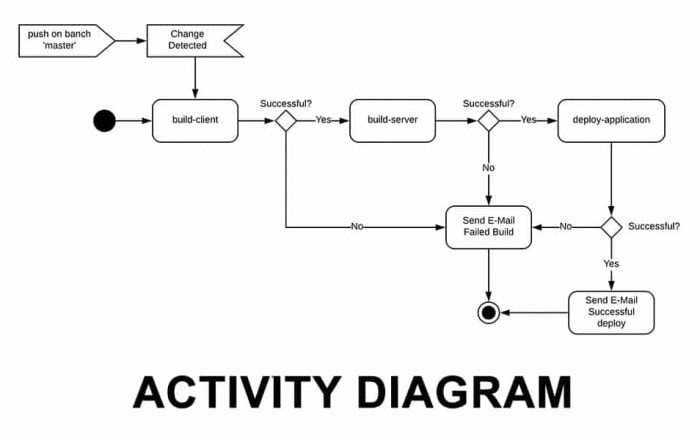 An activity diagram shows the activities, decisions, and flows of control in a circle.
An activity diagram shows the activities, decisions, and flows of control in a circle.
USE CASE DIAGRAM
Use case diagrams represent the use cases of the software system from the user’s perspective. A use case represents a specific software system functionality or features a user can perform.

Use case diagrams show the actors (users) and the use cases of the software system and their relationships.
SEQUENCE DIAGRAM
These represent interactions between the objects in the software system over time.

These diagrams can show the messages exchanged between the things and the order in which they occur.
COMMUNICATION DIAGRAM
In UML, a communication diagram shows the interactions between the objects or roles associated with lifelines and the messages
that pass between lifelines.
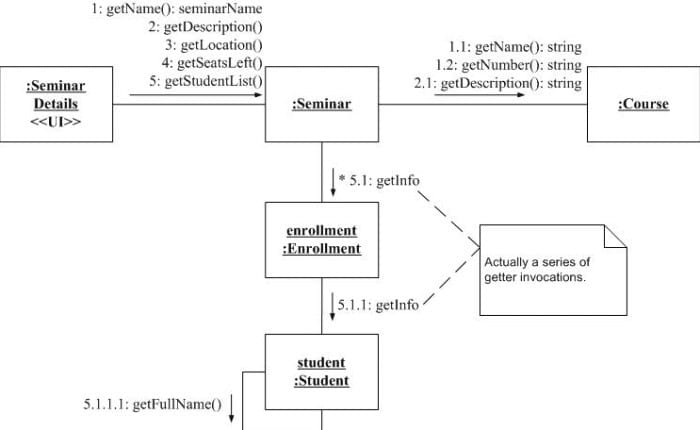
In earlier versions of UML, this diagram was called a collaboration diagram and had a different notation.
STATE DIAGRAM
State Diagrams are also State Machine diagrams, representing the behavior of the objects in the software system in response to events.
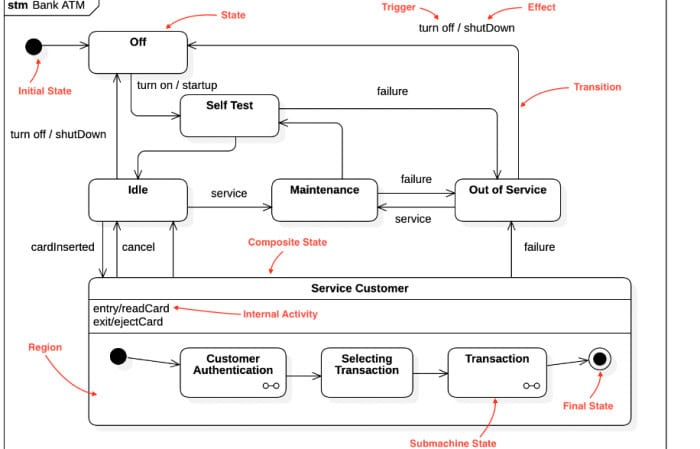
A state machine shows an object’s states, events, and transitions.
FAQS
What are the different types of UML diagrams in Java?
There are several types of UML diagrams in Java, including class, object, sequence, use case, state, and activity diagrams.
What is a class diagram in Java?
A class diagram in Java is a UML diagram that shows the structure of a Java program by representing classes, interfaces, and their relationships.
What is an object diagram in Java?
An object diagram in Java is a UML diagram that shows the instances of classes and their relationships at a particular point in time.
What is a sequence diagram in Java?
A sequence diagram in Java is a UML diagram that shows the interactions between objects and their sequence of messages in a particular scenario.
What is a state diagram in Java?
A state diagram in Java is a UML diagram that shows the lifecycle of an object and its possible states, and the events that trigger state transitions.
What is an activity diagram in Java?
An activity diagram in Java is a UML diagram that shows the workflow of a process or system, including its actions, decisions, and branching paths.
Conclusion
Therefore this was all about the UML diagram for Java. I hope you clearly understand the UML diagram and its importance.
See Also: What Are The Use Cases Of Python?

